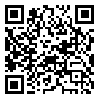Volume 3, Issue 2 (july 2019)
ohhp 2019, 3(2): 169-177 |
Back to browse issues page
Download citation:
BibTeX | RIS | EndNote | Medlars | ProCite | Reference Manager | RefWorks
Send citation to:



BibTeX | RIS | EndNote | Medlars | ProCite | Reference Manager | RefWorks
Send citation to:
MORAVVEJI S J, HALVANI G, RAEYAT MOHTASHAMI A, GHANAEI F, ANUSHE V. Identifying and Evaluating Operating Room Hazards in Shahid Beheshti Hospital in Kashan using the JSA Technique and its Relationship with Prioritized Engineering and Managerial Controls. ohhp 2019; 3 (2) :169-177
URL: http://ohhp.ssu.ac.ir/article-1-151-en.html
URL: http://ohhp.ssu.ac.ir/article-1-151-en.html
Seyed Jalal MORAVVEJI 
 , Gholamhossein HALVANI *
, Gholamhossein HALVANI * 

 , Abolfazl RAEYAT MOHTASHAMI
, Abolfazl RAEYAT MOHTASHAMI 
 , Fatemeh GHANAEI
, Fatemeh GHANAEI 
 , Vidasadat ANUSHE
, Vidasadat ANUSHE 


 , Gholamhossein HALVANI *
, Gholamhossein HALVANI * 

 , Abolfazl RAEYAT MOHTASHAMI
, Abolfazl RAEYAT MOHTASHAMI 
 , Fatemeh GHANAEI
, Fatemeh GHANAEI 
 , Vidasadat ANUSHE
, Vidasadat ANUSHE 

Department of Occupational Health Engineering, School of Public Health, Shahid Sadughi University of Medical Sciences, Yazd, Iran
Abstract: (3671 Views)
Introduction: The operation room is one of the most complex working environments in the health care system and the chance of accidents happening there is high. Studies show more than 50 identified dangers in the surgery room, which can potentially hurt the workers and patients there while many of these errors can be prevented. The aim of the current study is to identify and evaluate operating room dangers using the JSA technique and its correlation with prioritized engineering and managerial controls to prevent errors and decrease its consequences.
Methods: The current applied study has a descriptive-analytical design and was implemented with a cross-sectional design in the operating rooms of Shahid Beheshti Hospital in Kashan in 2017. The population of the study was the university faculty members, HSE experts, managers, surgeons and anesthesiologists, seasoned nurses, and the supervisors at Shahid Beheshti Hospital in Kashan and sampling was conducted via a census. The identification and evaluation of dangers was conducted using the JSA method and managerial and engineering approaches were determined using panel discussions.
Results: In the initial identification and evaluation of hazards in the operating room, 25 hazards were identified and evaluated using the JSA technique and after implementing the prioritized engineering and managerial controls, five of the identified hazards were controlled. Lifting heavy objects and unsuitable postures had the highest risk decrease (decreasing to 10 from 15), which was followed by facing chemical disinfectants and detergents (decreasing to 12 from 16), and touching sharp objects and catching infectious illnesses (decreasing to 12 from 15).
Conclusion: The results of the current study showed that the JSA technique can be effective in identifying and presenting control approaches. Furthermore, with greater focus on risk management on behalf of hospital boards to develop health quality and create a safe environment for the workers and patients is necessary. Adopting policies and programs for the monitoring of risk management in hospitals must be seriously consistent
Methods: The current applied study has a descriptive-analytical design and was implemented with a cross-sectional design in the operating rooms of Shahid Beheshti Hospital in Kashan in 2017. The population of the study was the university faculty members, HSE experts, managers, surgeons and anesthesiologists, seasoned nurses, and the supervisors at Shahid Beheshti Hospital in Kashan and sampling was conducted via a census. The identification and evaluation of dangers was conducted using the JSA method and managerial and engineering approaches were determined using panel discussions.
Results: In the initial identification and evaluation of hazards in the operating room, 25 hazards were identified and evaluated using the JSA technique and after implementing the prioritized engineering and managerial controls, five of the identified hazards were controlled. Lifting heavy objects and unsuitable postures had the highest risk decrease (decreasing to 10 from 15), which was followed by facing chemical disinfectants and detergents (decreasing to 12 from 16), and touching sharp objects and catching infectious illnesses (decreasing to 12 from 15).
Conclusion: The results of the current study showed that the JSA technique can be effective in identifying and presenting control approaches. Furthermore, with greater focus on risk management on behalf of hospital boards to develop health quality and create a safe environment for the workers and patients is necessary. Adopting policies and programs for the monitoring of risk management in hospitals must be seriously consistent
Type of Study: Research |
Subject:
safty
Received: 2018/09/22 | Accepted: 2019/09/15 | Published: 2019/09/15
Received: 2018/09/22 | Accepted: 2019/09/15 | Published: 2019/09/15
Send email to the article author
| Rights and permissions | |
 |
This work is licensed under a Creative Commons Attribution-NonCommercial 4.0 International License. |



